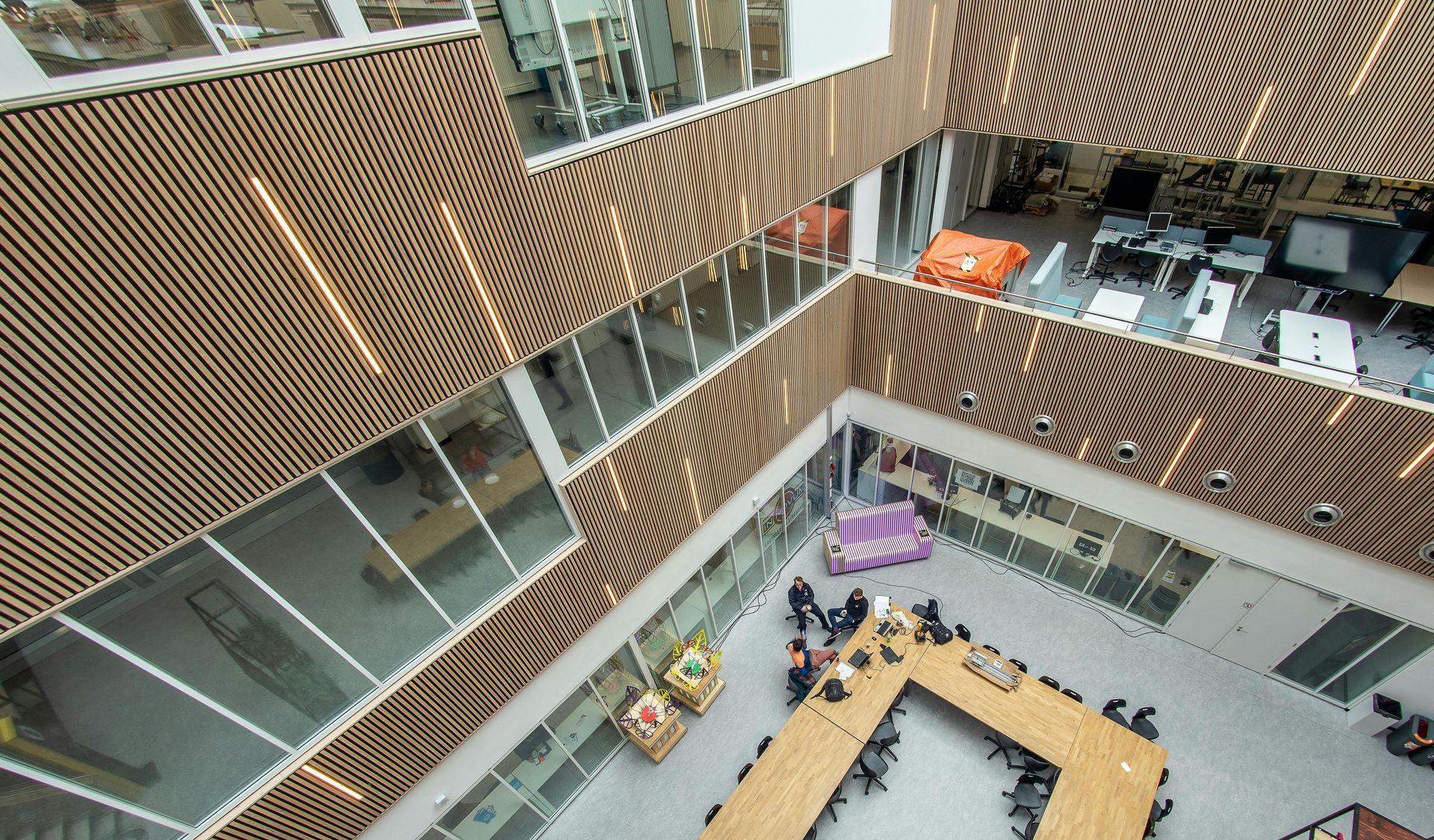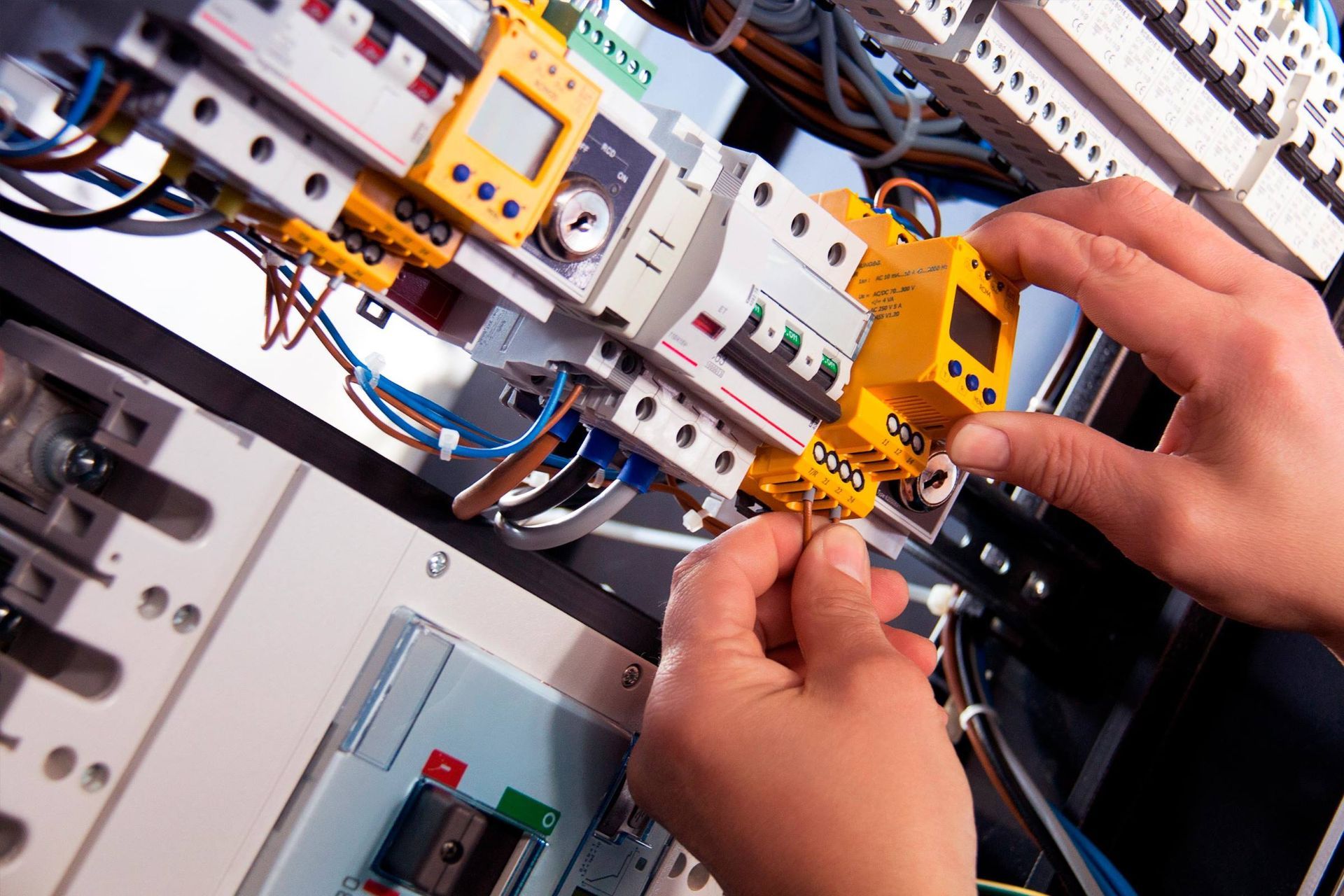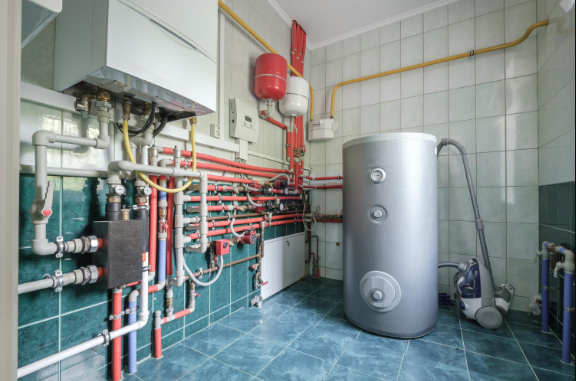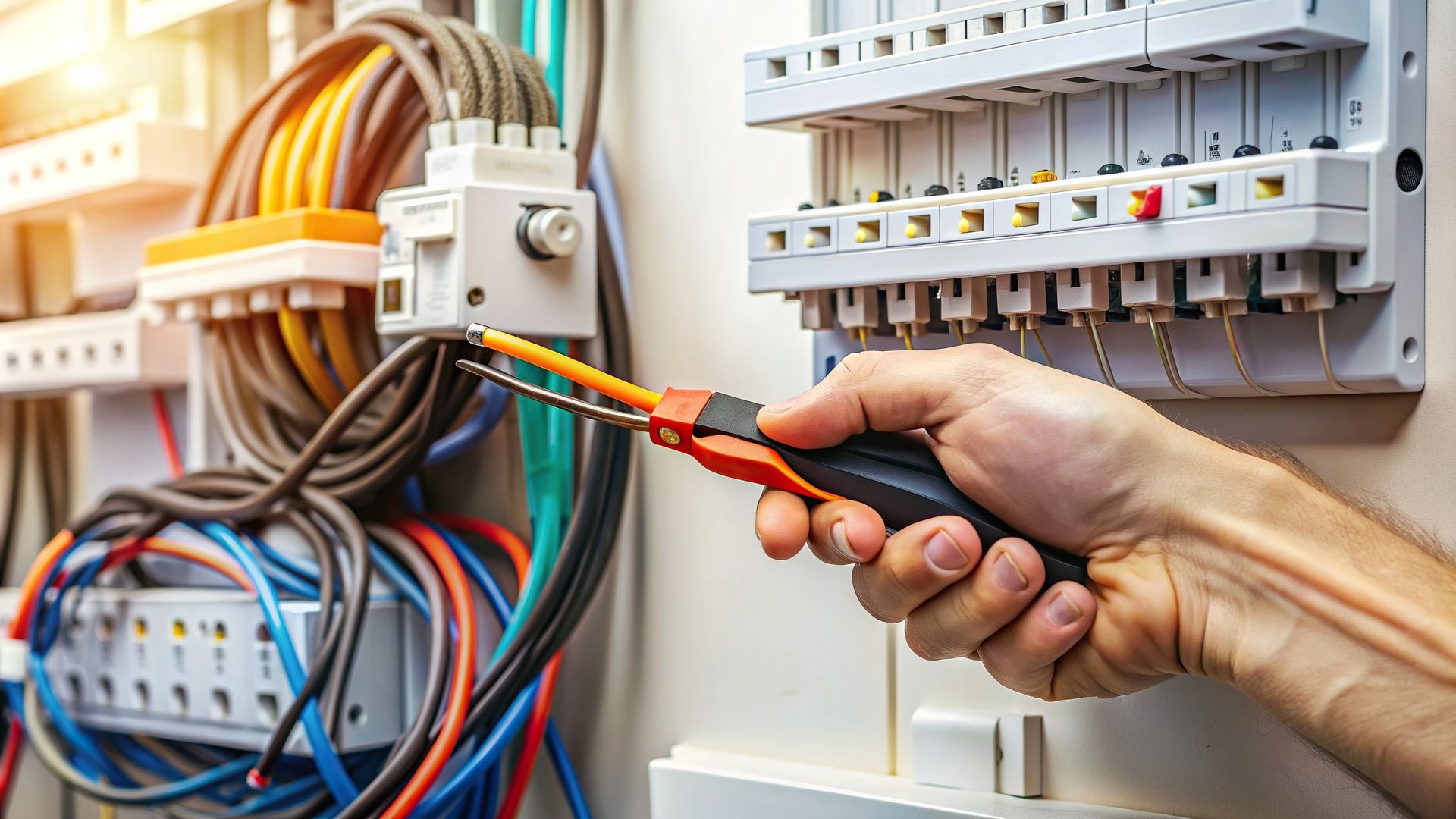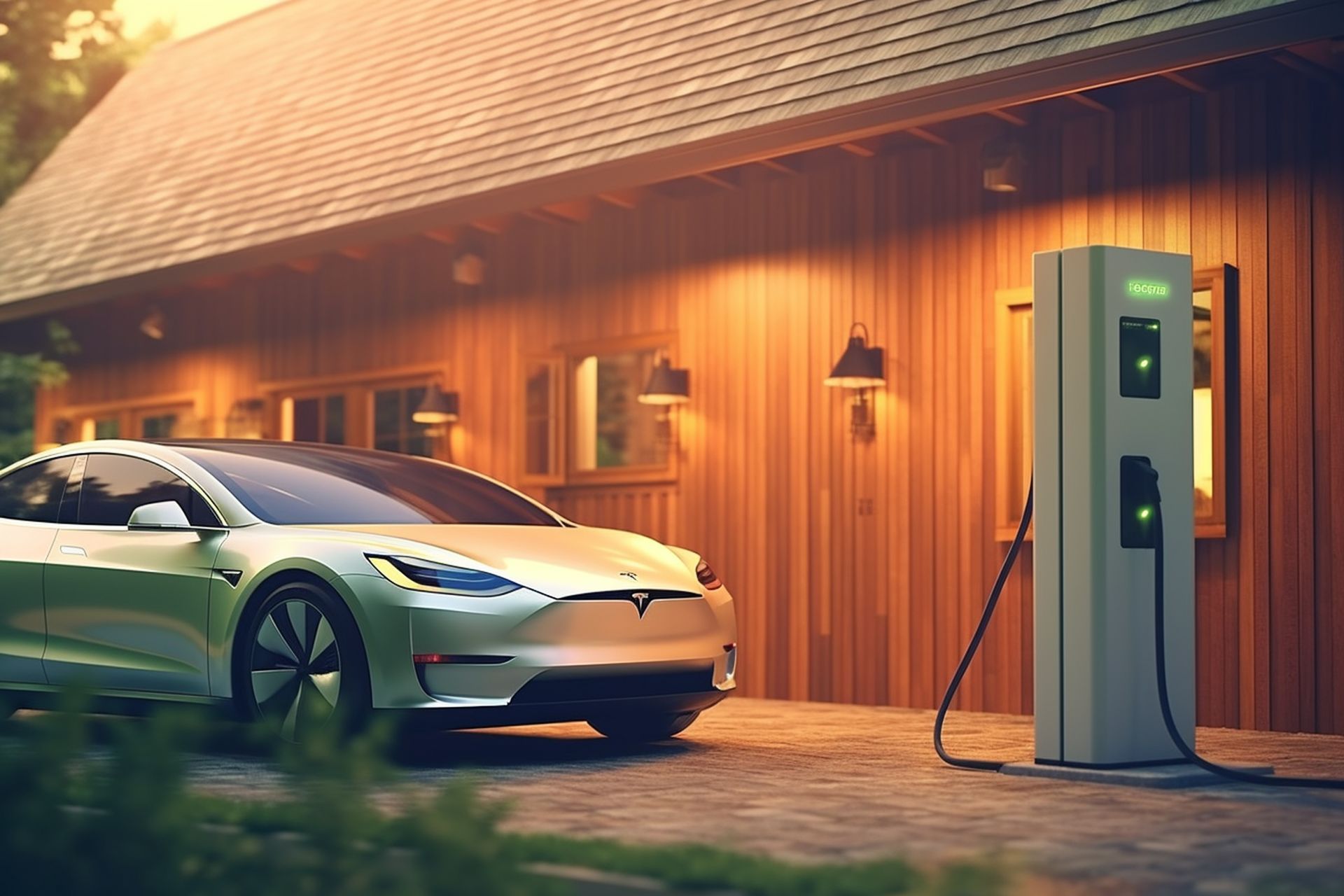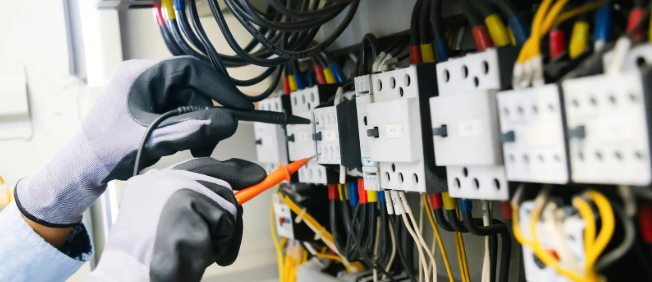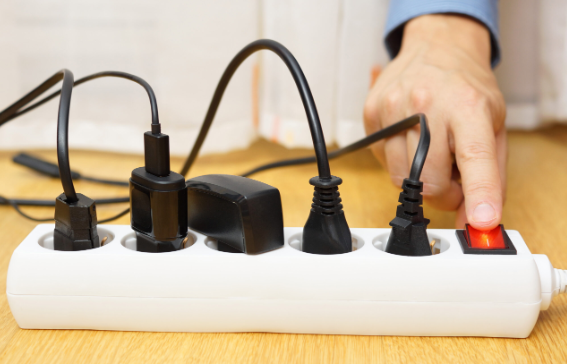Lighting Upgrades for Offices, Warehouses, and Retail Stores
How Lighting Needs Differ Across Commercial Environments: Offices, Warehouses, and Retail Stores.
Tailoring Light to Purpose: Different Spaces, Different Needs
In our previous blogs, we've explored Ontario's 2025 lighting rebate programs and energy-efficient commercial lighting solutions. Today, we're taking a more targeted approach by examining how lighting needs differ across three common commercial environments: offices, warehouses, and retail stores. At BradCon Electrical, we understand that proper lighting isn't a one-size-fits-all solution. Each space has unique requirements based on the activities performed there, and tailoring lighting design to these specific needs can dramatically improve energy efficiency, productivity, and even your bottom line.
Office Lighting: Balancing Productivity and Comfort
Office environments present a specific set of lighting challenges. Employees spend long hours performing visual tasks, often alternating between computer screens and physical documents. Poor lighting in these spaces can lead to eyestrain, headaches, and decreased productivity.
Meeting Office Lighting Standards
When upgrading office lighting, it's important to consider established standards and regulations:
- According to the SLL Code for Lighting 2022, office lighting for primarily screen-based tasks should be around 300 lux, while paper-based tasks require approximately 500 lux 299lighting
- IESNA recommendations suggest illumination levels between 200 to 500 lux for high contrast and large-scale tasks, with levels not exceeding 500 lux to avoid excessive screen contrast Modern
- When designing office lighting, factors like room dimensions, surface reflectances, workstation positioning, and glare reduction are crucial considerations Lumenloop
These standards aren't just arbitrary numbers—they're based on extensive research into human visual comfort and performance. Implementing lighting that meets these standards can significantly improve workplace satisfaction and efficiency.
Best LED Office Lighting Solutions
Modern LED solutions for office environments typically include:
LED Panel Lights and Troffers
These fixtures provide even, diffuse lighting that minimizes glare on computer screens. They're ideal replacements for outdated fluorescent troffers in dropped ceilings.
- 2x2 and 2x4 LED panels with integrated drivers
- Slim-profile edge-lit designs for modern aesthetics
- Color temperatures between 3500K-4000K for optimal office productivity
- UGR (Unified Glare Rating) under 19 to minimize screen glare
Task Lighting
Supplementary task lighting allows for personalization of light levels at individual workstations, reducing overall ambient lighting requirements.
- Adjustable desk lamps with dimming capabilities
- Under-cabinet lighting for administrative areas
- LED task lights with high color rendering (CRI 90+)
Smart Controls
Office lighting controls that integrate with building management systems offer substantial energy savings beyond the efficiency of the fixtures themselves.
- Daylight harvesting systems that adjust artificial lighting based on available natural light
- Occupancy sensors for conference rooms and less-frequently used spaces
- Time-based controls that align with office hours
- Tunable white systems that adjust color temperature throughout the day
The Impact on Employee Wellbeing
Beyond basic illumination, modern office lighting is increasingly recognized for its impact on employee health and productivity:
- Studies show that giving workers in open plan offices local control of lighting can increase job satisfaction and decrease stress Hse
- Proper lighting reduces eye strain during computer work
- Strategic lighting design can help maintain natural circadian rhythms
- Balanced lighting reduces the fatigue associated with traditional fluorescent systems
By upgrading to LED lighting with proper controls, offices can create more comfortable and productive environments while significantly reducing energy consumption.
Warehouse Lighting: Balancing Safety and Efficiency
Warehouse environments present entirely different lighting challenges compared to offices. With high ceilings, large open spaces, and activities focused on movement and storage, warehouses require lighting solutions that prioritize visibility, safety, and operational efficiency.
Meeting Warehouse Lighting Standards
Warehouse lighting must meet specific standards related to the tasks performed:
- According to DIN EN 12464-1, workshop and warehouse spaces require a minimum of 750 lux, significantly more than the 500 lux recommended for office environments ECONLUX
- OSHA uses foot candles as a measurement unit, with different spaces requiring varying minimum levels to meet regulations Inductionlightingfixtures
- Proper vertical illumination is critical for reading labels and identifying items on shelves
- Emergency lighting must provide adequate pathways for evacuation
Best LED Warehouse Lighting Solutions
The most effective warehouse lighting solutions address the unique challenges of these tall, expansive spaces:
High-Bay LED Fixtures
High-bay fixtures are specifically designed for spaces with ceilings above 20 feet.
- LED high-bay lights offer remarkable benefits including up to 75% less energy consumption than conventional lighting, lifespans approaching 200,000 hours, and better quality light with higher color rendering Usled
- Available in various beam angles to suit aisle configurations
- Round/UFO designs for open areas
- Linear high-bays for directional illumination
Aisle Lighting
Specialized aisle lighting can target light where it's most needed:
- Linear layouts that direct light onto shelves
- Narrow beam distributions that minimize spillage
- Positioning that minimizes shadows on lower shelves
Smart Controls for Warehouses
Perhaps no commercial environment benefits more from intelligent controls than warehouses:
- Motion sensors can be particularly valuable in warehouses, detecting movement and adjusting lights as necessary in areas with low foot traffic to prevent wasted energy Usled
- Zoned lighting control systems that create independent lighting areas based on activity
- Daylight harvesting near loading docks and skylights
Safety and Operational Benefits
Proper warehouse lighting directly impacts safety and operational efficiency:
- Reduced risk of accidents during material handling
- Improved accuracy in order picking
- Better visibility for machinery operators
- Enhanced security monitoring
- Reduced strain on workers performing visual tasks
With ceilings often reaching 30 feet or higher, the maintenance benefits of long-life LED lighting are particularly valuable in warehouses, where lamp replacement can be disruptive and expensive.
Retail Lighting: Enhancing the Customer Experience
Retail environments have perhaps the most nuanced lighting requirements of all commercial spaces. Beyond simple illumination, retail lighting must create atmosphere, highlight merchandise, guide customers through the space, and ultimately influence purchasing decisions.
The Science of Retail Lighting
Effective retail lighting strategies are based on understanding how lighting affects customer perception and behavior:
- According to an ENERGY STAR study of U.S. grocers, converting to LED lighting increased sales by 19%Insights
- A study of a supermarket where half was lit with LED and half with traditional fluorescent lighting showed a 2% sales increase in the LED-lit section, attributed to improvements in the perceived freshness and attractiveness of productsPecnw
- Color rendering is critical for accurate product appearance, particularly for clothing and food items
- Contrast and focal lighting direct customer attention to featured merchandise
Best LED Retail Lighting Solutions
Retail lighting typically employs several layers of light to create a complete shopping environment:
Ambient Lighting
General illumination sets the overall mood of the store:
- Color temperature plays a crucial role in setting the right mood, with warm white (2700K-3000K) creating a cozy, inviting atmosphere ideal for fashion and lifestyle storesLitomatic
- Recessed downlights or linear fixtures for background illumination
- LED panels for clean, modern aesthetics
Accent Lighting
Targeted lighting draws attention to displays and featured products:
- Accent lighting should maintain a contrast ratio of at least 3:1 compared to ambient lighting, with 5:1 being ideal for maximum impactRl
- Track lighting with adjustable heads for flexibility
- LED spotlights with narrow beam angles for dramatic highlighting
- Shelf lighting integrated into display fixtures
Feature and Perimeter Lighting
Wall washing and perimeter lighting create depth and guide customer flow:
- Linear LED wall washers to illuminate vertical surfaces
- Cove lighting for architectural emphasis
- LED strips integrated into shelving and displays
Smart Retail Lighting Systems
Modern retail lighting increasingly incorporates intelligent systems:
- Modern LED technology offers flexibility for creating the right ambiance throughout the day, with brighter settings during peak hours and softer lighting in the eveningsVorlane
- Systems that adjust color temperature based on time of day
- Occupancy sensing for back-of-house areas
- Integration with retail analytics for traffic pattern analysis
Creating Compelling Customer Experiences
Beyond basic illumination, retail lighting directly influences the shopping experience:
- One high-end fashion boutique solved lighting issues by replacing outdated fixtures with high color-rendering LED systems, which allowed merchandise to be displayed in its truest colorsRetailcustomerexperience
- Proper lighting can reduce perceived wait times
- Strategic lighting guides customers through the retail journey
- Enhancing product appearance directly influences purchasing decisions
In retail environments, lighting is as much a marketing tool as it is a utility, making the return on investment for high-quality LED systems particularly significant.
The Universal Benefits of LED Upgrades
While we've highlighted the specific benefits of LED lighting for different commercial environments, several advantages apply universally across all these spaces:
Energy Efficiency and Cost Savings
All commercial spaces benefit from the reduced energy consumption of LED technology:
- 50-75% energy reduction compared to traditional lighting
- Extended lifespans of 50,000+ hours reducing maintenance costs
- Reduced HVAC load due to less heat output
- Potential for demand response incentives from utilities
Environmental Impact
Sustainability benefits extend beyond energy savings:
- Reduced carbon footprint
- No mercury or hazardous waste concerns
- Recyclable components
- Reduced light pollution with proper design
Integration with Building Systems
Modern LED lighting solutions increasingly function as components of larger intelligent building systems:
- Integration with building automation
- Participation in demand response programs
- Data collection for space utilization analysis
- Foundation for IoT implementations
Implementation Strategy: A Phased Approach
For most businesses, a complete lighting overhaul represents a significant investment. BradCon Electrical typically recommends a phased approach to commercial lighting upgrades:
- Energy Audit and Assessment: Begin with a comprehensive evaluation of current lighting systems, energy usage, and specific needs for each area
- Prioritize High-Impact Areas: Focus first on spaces with:
- Highest energy usage
- Greatest potential for operational improvements
- Highest visibility to customers or employees
- Leverage Available Incentives: As we've discussed in previous blogs, utilize Ontario's rebate programs to maximize ROI
- Implement and Measure: Track energy savings and other benefits to build the case for subsequent phases
- Expand and Enhance: Roll out additional upgrades based on proven success
This approach allows businesses to manage capital expenditures while still making meaningful progress toward more efficient, effective lighting.
Making The Right Choice For Your Space
Selecting the optimal lighting solution for your commercial environment requires balancing multiple factors:
- Initial cost vs. long-term savings
- Energy efficiency requirements
- Specific visual tasks performed in the space
- Aesthetic considerations
- Maintenance capabilities
- Integration with existing systems
At BradCon Electrical, we work with clients to navigate these considerations and develop tailored lighting solutions for offices, warehouses, and retail spaces throughout Toronto and the GTA. Our approach begins with understanding your specific needs, followed by a detailed assessment of your current systems and the development of a customized upgrade plan.
Key Takeaways
Different commercial environments have distinct lighting requirements that demand tailored approaches:
- Office lighting should provide comfortable, glare-free illumination for computer-based and paper-based tasks, typically at 300-500 lux with careful attention to screen reflections and employee comfort.
- Warehouse lighting requires higher illumination levels (750+ lux), with fixtures designed for high ceilings and configurations that provide proper vertical illumination on shelving and work areas.
- Retail lighting must balance ambient illumination with strategic accent lighting, using carefully selected color temperatures and high color rendering to enhance merchandise and create engaging customer experiences.
Across all these environments, LED technology offers substantial benefits in energy efficiency, longevity, control flexibility, and light quality. By understanding the specific needs of each space type, businesses can make informed lighting upgrade decisions that enhance both operational efficiency and user experience.
If you're considering lighting upgrades for your office, warehouse, or retail space in the Toronto area, BradCon Electrical can help you navigate the options and implement solutions that maximize both performance and energy savings. Contact us at (416) 881-4212 to schedule a lighting assessment and explore how modern LED technology can transform your commercial environment.
Frequently Asked Questions
How do lighting needs differ between offices, warehouses, and retail stores?
Office environments typically require moderate illumination (300-500 lux) with careful attention to glare control for computer work. Warehouses need higher illumination levels (750+ lux) with emphasis on vertical surfaces and safe movement. Retail spaces need layered lighting with both ambient illumination and strategic accent lighting to highlight merchandise and create atmosphere. Each environment has unique lighting standards based on the visual tasks performed there.
What ROI can businesses expect from lighting upgrades in these different spaces?
Return on investment varies by space type, but most businesses see payback periods of 2-3 years for office upgrades, 1-2 years for warehouses (due to higher energy usage), and 1-3 years for retail (where sales lift can accelerate ROI). Energy savings typically range from 50-75% compared to traditional lighting, with additional savings from reduced maintenance and potential HVAC load reduction. Ontario's energy efficiency rebates can further improve these returns.
Are smart lighting controls worth the additional investment?
Smart controls typically add 15-30% to project costs but can deliver an additional 30-50% energy savings beyond the basic LED upgrade. They're particularly valuable in spaces with variable occupancy (like warehouses) or changing daylight conditions. The most cost-effective applications include occupancy sensing in warehouses, daylight harvesting in perimeter office zones, and time-based controls in retail environments. These systems often qualify for additional incentives under Ontario's energy efficiency programs.
How disruptive is a lighting upgrade to normal business operations?
Disruption varies by space type and project scope. Office upgrades can often be performed after hours with minimal impact. Warehouse lighting typically requires scheduling around operational periods, potentially with phased implementation to maintain productivity. Retail upgrades are usually performed during closed hours or in phases to avoid customer disruption. BradCon Electrical develops detailed implementation plans that minimize operational impact while maintaining safe working conditions throughout the upgrade process.

